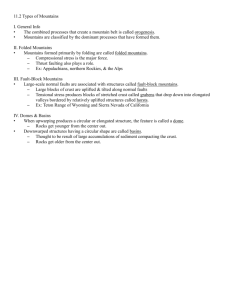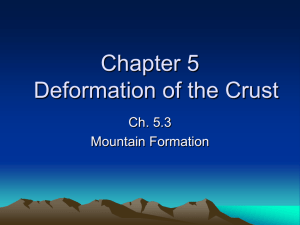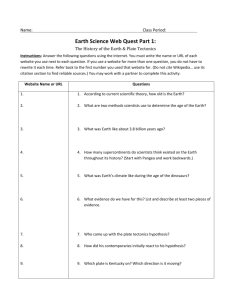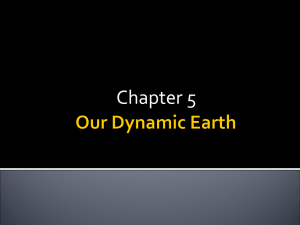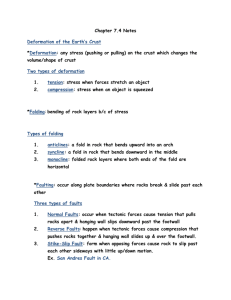Fields of Science
advertisement
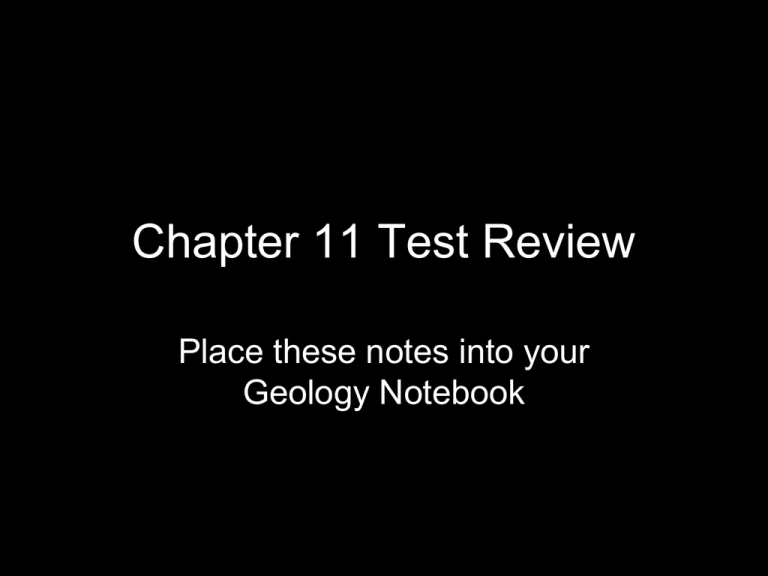
Chapter 11 Test Review Place these notes into your Geology Notebook Define C11 Vocabulary into your Geology Notebook. A continental margin is a boundary between continental crust and oceanic crust. Features of a passive continental margin: • Sediments consisting of the skeletons and shells of marine organisms. • Sediments consisting of weathered rock materials. • A boundary between oceanic crust and continental crust. When continental crust and oceanic crust collide, mountains form on the continent. The Himalayas are forming as a result of two continents in collision. Volcanic rocks exist along the northern edge of the Himalayas because before India collided with Asia, subduction occurred. Stress on rock layers that involves forces pushing in opposite directions is called shear stress. Rock layers that are subjected to squeezing forces tend to become thicker and shorter. The compass direction of a fold or a rock layer exposed at the surface along a fold is called the strike. Synclines are downfolds in rock, whereas anticlines are upfolds in rock. Valley and ridge locations in the Valley and Ridge provinces of the Appalachian Mountains correspond primarily to weathering rate of rock. A reverse fault occurs when the hanging wall moves up with respect to the footwall. The San Andreas Fault is an example of a strike-slip fault. Joints can be the result of the same stresses that form mountains, provide channels through which water flows, and their surface is usually a plane. World Faults Tension stress on Earth’s crust is a factor in the formation of fault-block mountains. Laccolith activity is usually responsible for the formation of some plutonic domes. The Adirondack Mountains of New York are not an example of fault-block mountains. Large blocks of crust that have dropped between normal faults are called grabens. Dome mountains are not usually associated with normal faults. An ocean basin disappeared into a subduction zone during the formation of the Himalayas. Dome mountains are nearly circular folded mountains. Mountains Label the drawing using the following terms: anticline, syncline, limb. Draw lines from these terms to the parts of the drawing they describe. anticline limb syncline Essay 1: Describe the differences between dome mountains and fault-block mountains in terms of how they are formed. Dome mountains are formed by uplifting forces, either igneous intrusions of forces that arch rocks upward. They are round and usually appear alone. Fault block mountains are whole blocks of crust forced upward as a result of normal faulting caused by tensional stress. They exist as chains. Essay 2: Explain why caverns can form along joint planes. Joints are breaks in bedrock along which no movement has occurred. They can provide channels for fluids. Groundwater that flow through them and dissolves limestone can cause cavern formation.
